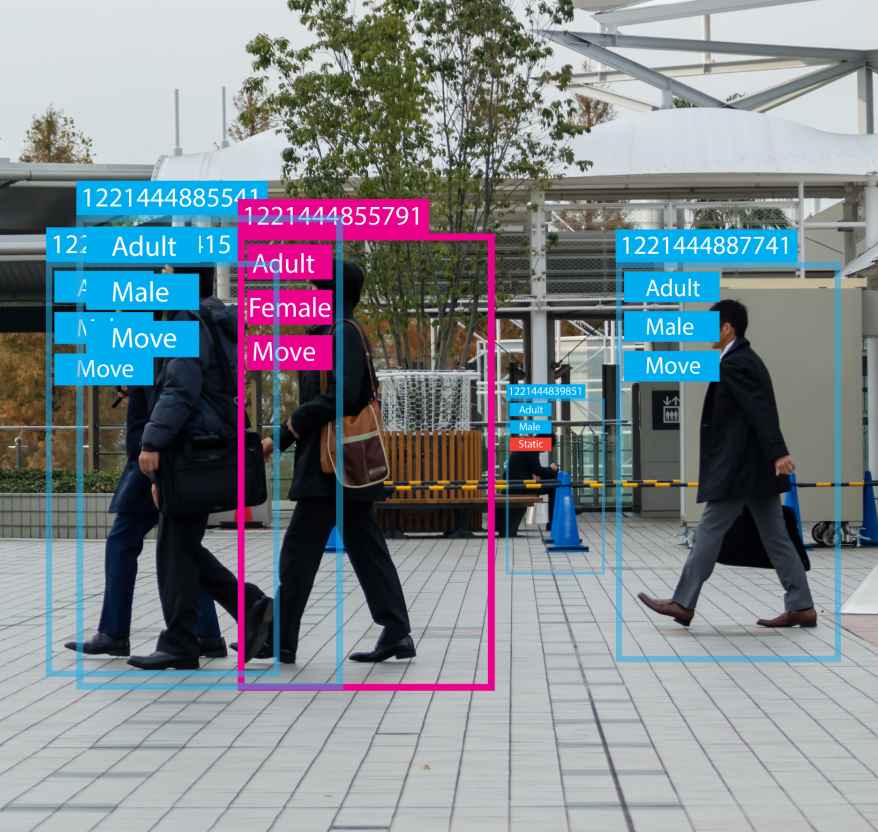At COCO Annotator, we offer expert annotation services for the COCO object detection task. Our team of skilled annotators utilizes deep learning models various key techniques to deliver precise, efficient, and timely results for our clients.

About
At COCO Annotator, we offer expert annotation services for the COCO object detection task. Our team of skilled annotators utilizes deep learning models various key techniques to deliver precise, efficient, and timely results for our clients.
Benefits of COCO Object Detection Task:
what we do
Our team of experts uses state-of-the-art techniques to provide accurate and reliable COCO annotation services. Here are some of the key techniques we use:

CNNs are widely used in object detection as they can process large amounts of visual data and learn to identify patterns and features within the images. They are trained on large datasets of annotated images, such as COCO, to learn how to recognize and classify objects.

RPNs are a type of CNN that are specifically designed to generate object proposals in an image. These proposals are regions of an image that are likely to contain an object, and are used as input to the object detection network.

NMS is a technique used to eliminate duplicate object detections. It works by suppressing detections that overlap with a higher-scoring detection in the same region.

Data augmentation is the process of artificially increasing the size of a training dataset by applying transformations to the input images, such as rotation, scaling, and flipping. This technique can improve the generalization ability of the model and reduce overfitting.

Transfer learning is a technique that involves reusing pre-trained neural networks for a new task. In the context of COCO object detection, this involves taking a pre-trained model that has been trained on a large dataset of images, such as ImageNet, and fine-tuning it on the COCO dataset.

Ensemble methods involve combining multiple models to improve the accuracy of object detection. This can be done by training multiple models with different hyperparameters or architectures, or by combining the outputs of multiple models to produce a final prediction.
GET STARTED
Object detection has evolved significantly with the advent of deep learning, offering a variety of algorithms that vary in complexity, speed, and accuracy. Traditional methods like Haar Cascades and Histogram of Oriented Gradients (HOG) have given way to more advanced techniques, many of which have been rigorously tested on benchmark datasets like COCO (Common Objects in Context).
Here’s a quick rundown of some key deep learning algorithms commonly used in COCO Object Detection Task:
Faster R-CNN: A two-stage method known for high accuracy but is generally slower, making it less suitable for real-time applications.
YOLO (You Only Look Once): A single-stage algorithm that excels in speed but may struggle with smaller or overlapping objects.
SSD (Single Shot MultiBox Detector): Balances speed and accuracy, suitable for a variety of applications.
RetinaNet: Designed to detect objects that are often missed by other algorithms, but is complex to train.
CenterNet: Simplifies object detection by focusing on the object’s center point.
EfficientDet: Optimized for both speed and accuracy and scales well across different computational budgets.
Choosing the right algorithm depends on the specific requirements of your application, such as speed, detection accuracy only, and the types of objects you wish to detect.
Comparison
The Common Objects in Context (COCO) dataset has become one of the benchmark datasets for computer vision techniques for object detection, among other computer vision tasks like segmentation and keypoint detection. It stands out for several reasons when compared to other popular datasets for object detectors such as Pascal VOC, ImageNet, and ADE20K. Below are some unique features and complexities that distinguish COCO in the object detection field.
While many datasets focus on object detection problem a limited number of object classes, COCO encompasses a wide variety of classes detect objects, spanning everyday objects to animals and vehicles. This makes it a more comprehensive dataset for generalized object detection tasks.
COCO is unique in providing multiple instances of objects within a complex scene, offering rich contextual information. This allows algorithms to learn not just object identification image classification, but also the detected object's relationship with its surrounding environment.
COCO boasts high-quality annotations that are more precise than many other datasets. The bounding boxes and segmentation masks are carefully labeled, enabling better training of detection models.
Beyond bounding boxes for object detection, COCO also offers instance-level image segmentation masks and keypoints annotations for human poses. This multi-faceted annotation approach makes it valuable for a range of computer vision tasks beyond two bounding boxes for object detection.
While most datasets primarily contain medium-to-large objects, COCO has a considerable number of small object instances. Detecting small objects is challenging and therefore provides an interesting problem for object detection models to solve.
The sheer volume of images image data and annotations in COCO makes it one of the largest datasets for object detection in deep learning ever. A large dataset is crucial for training deep neural networks effectively, and COCO provides this scale.
industries
Our COCO annotation services can help businesses in various industries that require computer vision models, such as:
We can help e-commerce businesses accurately tag their product images with COCO object annotations, enabling more efficient search and better product recommendations.
Our COCO annotation services can be used to train object detection models for autonomous driving systems, helping improve the safety and reliability of these vehicles.
We can assist healthcare providers in accurately detecting and analyzing medical images, enabling faster and more accurate diagnoses.
We can help the agriculture industry identify pests and diseases in crops using COCO object detection, enabling more effective treatment and prevention strategies.
Our COCO annotation services can be used to train object detection models for autonomous driving systems, helping improve the safety and reliability of these vehicles.
We can assist robotics companies in developing object detection models for robots, enabling them to perform a wider range of tasks.
Our Solutions
Providing datasets like COCO (Common Objects in Context) for public or restricted use comes with responsibilities that encompass legal and ethical dimensions. As state-of-the-art providers of the COCO dataset, we are committed to upholding the highest standards to foster responsible research and application development. Below are key considerations we focus on:
Data Privacy and Ownership:
All images in the COCO dataset have been collected in accordance with relevant privacy laws and regulations. We respect the privacy of individuals by anonymizing or removing any personally identifiable information.
Data Sharing Agreements:
We adhere to standardized data sharing agreements that provide comprehensive guidelines on data distribution and how the dataset can be used, stored, and distributed.
Terms and Conditions:
Before granting access to the dataset, users must agree to specific terms and conditions that stipulate acceptable uses, citation requirements, and restrictions against misuse, among other clauses.
Intellectual Property:
The COCO dataset is designed primarily for academic and research purposes. Commercial use may be subject to different licensing terms, which are clearly laid out during the acquisition process.
An ethical review board evaluates the ethical implications of the COCO dataset regularly. This includes scrutinizing the fairness, accountability, transparency, and security aspects of how the dataset is used by external researchers and organizations.
By maintaining stringent legal and ethical standards, we aim to make the COCO dataset a reliable, responsible, and beneficial resource for advancing the field of object detection and broader applications in computer vision.

What You Get
MORE INFO
Navigating the intricate world of object detection can be challenging, especially if you’re new to the concept or exploring advanced capabilities like the COCO Object Detection Task. Here, we’ve compiled a list of frequently asked questions to help you better understand this robust technology and how it could benefit your projects.
The COCO (Common Objects in Context) Object Detection Task is a benchmarking tool used to evaluate the effectiveness of object detection models. It uses a rich, varied dataset containing images from multiple contexts to assess how well algorithms can identify and locate objects within those images.
The COCO dataset is particularly esteemed for its diversity, complexity, and size, making it ideal for training robust machine learning models. The task-specific challenges in COCO help researchers and practitioners gauge the performance of their models in various realistic scenarios.
In COCO Object Detection, algorithms are evaluated based on their ability to correctly identify and localize objects from a set of predefined categories. This is usually done by drawing bounding boxes around the objects in the image and assigning category labels to them.
Metrics such as Average Precision (AP) and Average Recall (AR) are commonly used to quantify the performance of object detection models in the COCO benchmark. These metrics consider both the accuracy of the object’s classification and the precision of its localization.
COCO covers a wide range of objects belonging to 80 different categories, including everyday items like “car,” “dog,” and “person,” as well as more complex objects like “toothbrush,” “remote,” and “teddy bear.”
COCO Object Detection is highly versatile and can be applied across various industries like healthcare, automotive, security, retail, and many more.
You can get started by downloading the COCO dataset and using it to train your object detection model. Many machine learning frameworks, such as TensorFlow and PyTorch, provide pre-built APIs that make it easier to work with COCO.
Yes, the COCO dataset and the associated evaluation tools are generally open-source, making it easier for researchers and developers to contribute to or benefit from this rich resource.
Hardware requirements can vary depending on the model you are using. However, for efficient training and inference, a high-performance GPU is often recommended.
While COCO is extensive, it is not exhaustive. Certain object categories or specific use-cases may not be covered. Also, high computational resources may be required for training and inference.
MORE INFO